The Surprising AI Tool That Replaced My Virtual Assistant (And Saved Me $600/Month)
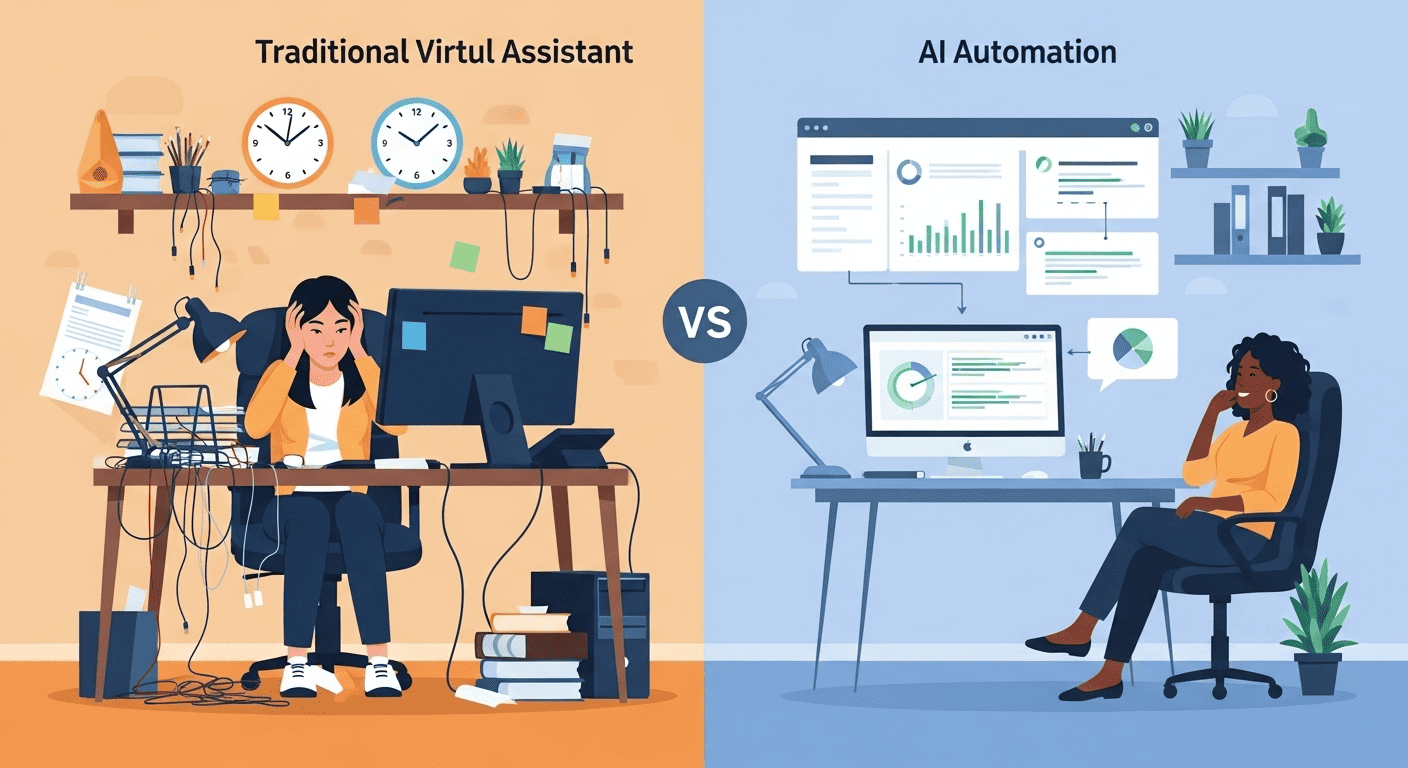
I never thought I’d fire someone who was actually good at their job.
For 18 months, Sarah was my virtual assistant. She managed my calendar, triaged emails, and handled research tasks that would have consumed hours of my day. At $800 per month, she was worth every penny. Or so I thought.
The problem wasn’t Sarah’s competence — it was the inherent limitations of working with humans across time zones. When I needed something urgent at 9 PM my time, I had to wait until her morning. When she had questions about a task, my response would sit in her inbox overnight. We were playing productivity ping-pong, and the ball kept dropping.
Then I discovered Manus, and everything changed.
The Virtual Assistant Dilemma
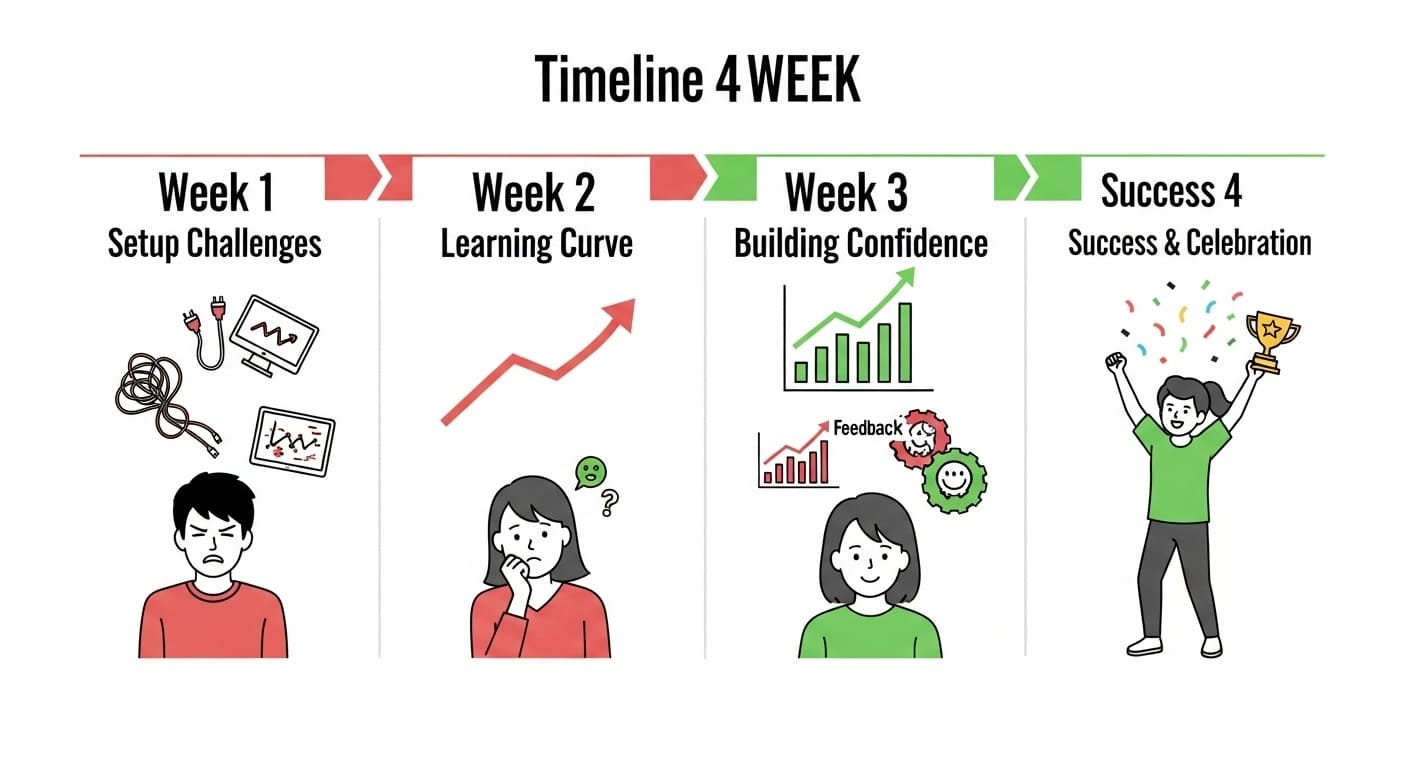
If you’ve worked with virtual assistants, you know the dance. You spend time training them, creating detailed SOPs, and building systems to minimize miscommunication. When it works, it’s magical. When it doesn’t, it’s frustrating.
My specific pain points with human assistance:
Time Zone Delays: Sarah worked Philippine time. My urgent 8 PM request became her 9 AM task the next day.
Communication Overhead: Every task required explanation, clarification, and follow-up. Sometimes the back-and-forth took longer than doing it myself.
Availability Limits: Weekends, holidays, and sick days meant work piled up. I found myself doing assistant tasks during “off” times.
Quality Inconsistency: Sarah was great, but she had good days and bad days. Her energy and focus varied, which meant my output varied too.
Don’t get me wrong — Sarah was talented and reliable. The issues weren’t personal; they were structural. Human assistance has inherent limitations that no amount of training can solve.
Enter the AI Alternative
I stumbled across Manus during a late-night productivity rabbit hole. The promise was bold: an AI agent that could handle complex, multi-step tasks without constant supervision. I was skeptical — I’d tried AI tools before, and most felt like sophisticated chatbots.
But I was curious enough to test it.
My initial plan was simple: give Manus the same tasks I gave Sarah and see what happened. Email management, calendar coordination, and research projects. If it could handle 50% of Sarah’s workload, it might be worth the investment.
I was not prepared for what actually happened.
The 30-Day Experiment
Week 1: Setup and Skepticism
Setting up Manus took longer than advertised. The marketing promised “2 days to full automation.” The reality was closer to two weeks. Not because the platform was difficult, but because I underestimated the complexity of my existing workflows.
Sarah and I had developed shortcuts and assumptions over 18 months. Translating that institutional knowledge into AI instructions required more thought than I expected. I found myself documenting processes I’d never formally written down.
The first week was frustrating. Manus made mistakes Sarah never would have made. It misunderstood context, over-complicated simple tasks, and required constant correction. I questioned whether I was wasting time on another overhyped AI tool.
Week 2: The Learning Curve
Something shifted in week two. Manus began recognizing patterns in my feedback. Tasks that required multiple corrections in week one started working smoothly. The AI was learning my preferences faster than I expected.
The breakthrough moment came on a Thursday evening. I had 47 emails waiting after a client meeting. Normally, this would mean either staying late to process them or finding them still waiting Friday morning (if Sarah was handling them).
Instead, I watched Manus sort, prioritize, and draft responses in real-time. Twenty minutes later, my inbox was organized, urgent items were flagged, and draft responses were ready for my review. The quality wasn’t perfect, but it was 80% there — and it happened instantly.
Week 3: Building Confidence

By week three, I was delegating tasks I’d never trusted to Sarah. Complex research projects, multi-step workflows, and even some client communication. Manus didn’t just complete tasks; it documented its process and suggested improvements.
The AI began proactively identifying inefficiencies in my workflows. It suggested automating recurring tasks I hadn’t even considered automating. Sarah was reactive — she did what I asked. Manus was proactive — it anticipated what I needed.
Week 4: The Realization
Four weeks in, I realized I hadn’t assigned Sarah a new task in over a week. Everything was flowing through Manus, and it was working better than I’d hoped.
The numbers were compelling:
•Email processing: 2-hour delay → instant
•Research tasks: 24–48 hour turnaround → 2–4 hours
•Calendar management: next-day updates → real-time
•Task documentation: manual notes → automatic logging
But the real difference wasn't efficiency — it was availability. I had already seen the power of AI customer service when I automated client support earlier that year, but this took it to another level.
The Honest Assessment
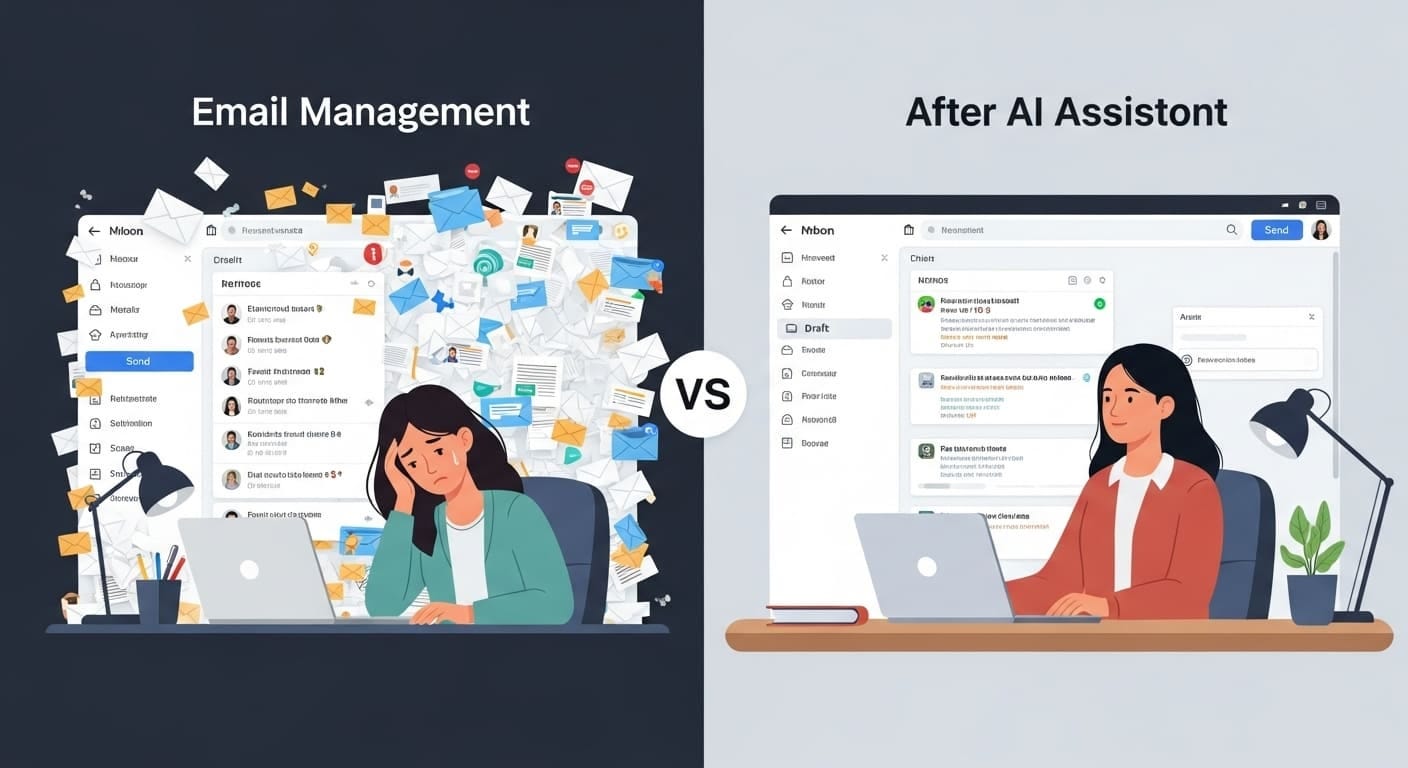
Four months later, Manus handles about 80% of what Sarah used to do. Here’s my brutally honest breakdown:
What Manus Does Better Than Human Assistants
Availability: 24/7 operation without breaks, vacations, or time zone limitations
Consistency: Same quality output regardless of time, day, or workload
Learning Speed: Adapts to preferences faster than humans typically do
Cost: 200/month vs 800/month for equivalent task volume
Integration: Seamlessly connects with all my tools and platforms
Documentation: Automatically tracks everything for future reference
Where Humans Still Win
Complex Communication: Sarah could read between the lines in client emails. Manus takes things literally.
Creative Problem-Solving: When faced with unusual situations, humans adapt better than AI.
Relationship Management: Sarah could build rapport with clients and vendors. Manus is efficient but not personable.
Judgment Calls: Humans excel at “this feels wrong” moments that require intuition.
The Unexpected Challenges
Setup Complexity: Getting Manus configured properly took significant upfront investment
Over-Automation: I initially tried to automate everything and had to dial back
Quality Control: AI output requires different review processes than human work
Dependency Risk: When Manus has technical issues, more of my workflow stops than when Sarah was unavailable
The Financial Reality
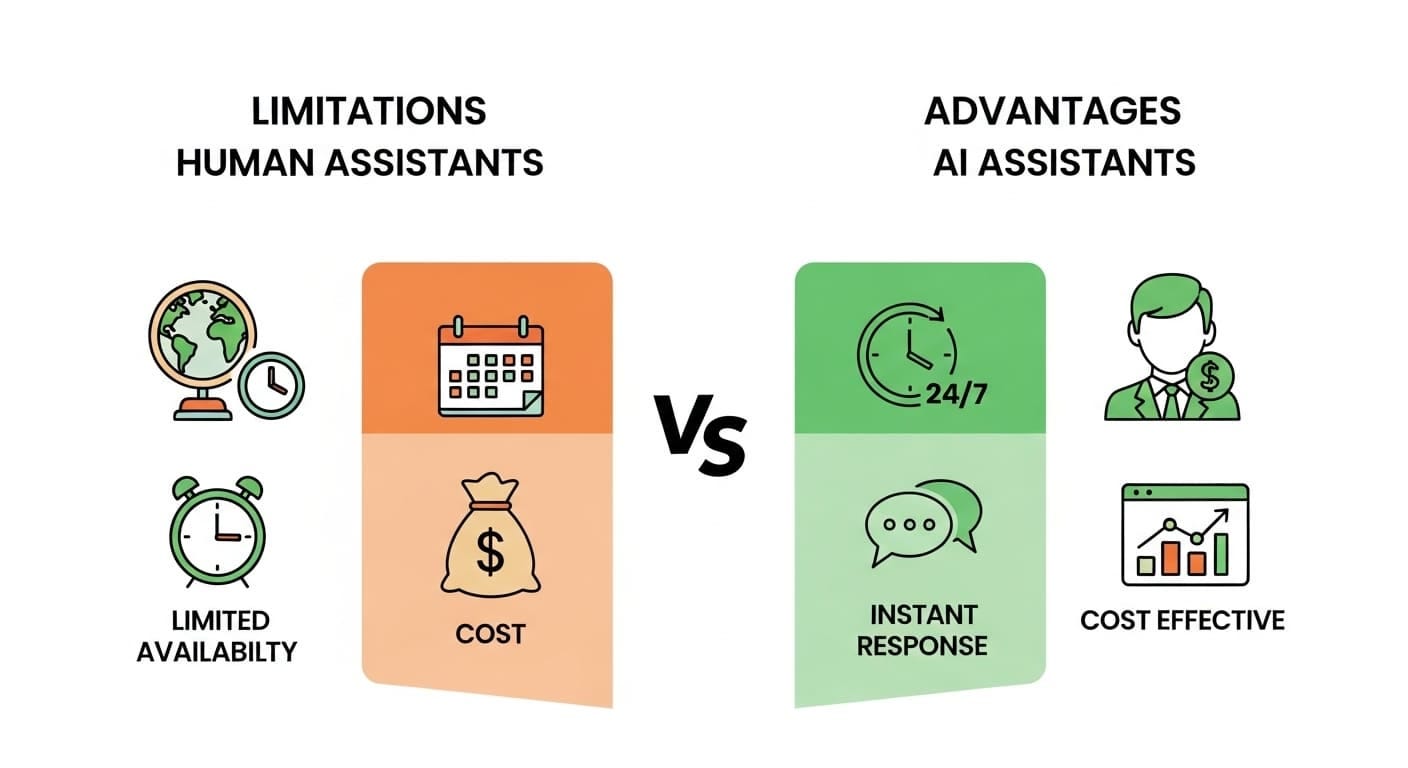
Let’s talk numbers, because that’s what convinced me to make the switch permanent.
Sarah’s Cost: 800/month+ occasional bonuses and project fees= 800/month + occasional bonuses and project fees = 900/month
Manus Cost: 200/month for the plan that handles my volume
∗∗NetSavings∗∗: 700/month or $8,400 annually
But the real ROI isn’t just cost savings — it’s capacity expansion. With Manus handling routine tasks instantly, I can take on more clients without proportionally increasing overhead. The AI scales with my business in ways human assistance couldn’t.
If you’re curious how other AI tools stack up, I did a full comparison of the 3 game-changing tools that actually delivered. Spoiler: Manus wasn’t the only one that impressed me.
Who Should Make This Switch
You’re a good candidate if:
•You have clearly defined, repeatable tasks
•Time zone coordination is a constant frustration
•You need 24/7 availability for urgent requests
•Cost efficiency is important for your business model
•You’re comfortable with technology and willing to invest setup time
Stick with human assistants if:
•Your work requires significant creative judgment
•Client relationship management is crucial
•You prefer the personal connection of human collaboration
•Your tasks are highly variable and context-dependent
•You don’t want to manage AI training and optimization
With Manus handling routine tasks instantly, I can take on more clients without proportionally increasing overhead. I explain exactly how that works in my customer support automation breakdown.
The Future of Assistance

I still work with human assistants for specific projects. Complex client communications, creative brainstorming, and relationship-building tasks still benefit from human touch. But for the routine, repeatable work that consumed hours of my day? AI wins decisively.
The future isn’t AI replacing all human work — it’s AI handling the predictable stuff so humans can focus on the irreplaceable stuff. Manus gave me back 15–20 hours per week to spend on strategy, creativity, and relationship building. That’s time I can never get from optimizing human workflows.
Sarah understood when I explained the transition. She’s actually started using AI tools in her own business, automating the routine work so she can focus on higher-value client services. The technology isn’t eliminating jobs — it’s elevating them.
If you’re spending significant money on virtual assistance for routine tasks, it’s worth testing AI alternatives. Start small, expect a learning curve, and be honest about what you actually need human judgment for.
The future of productivity isn’t choosing between human and artificial intelligence — it’s using both for what they do best.
Try Manus For 14 Days
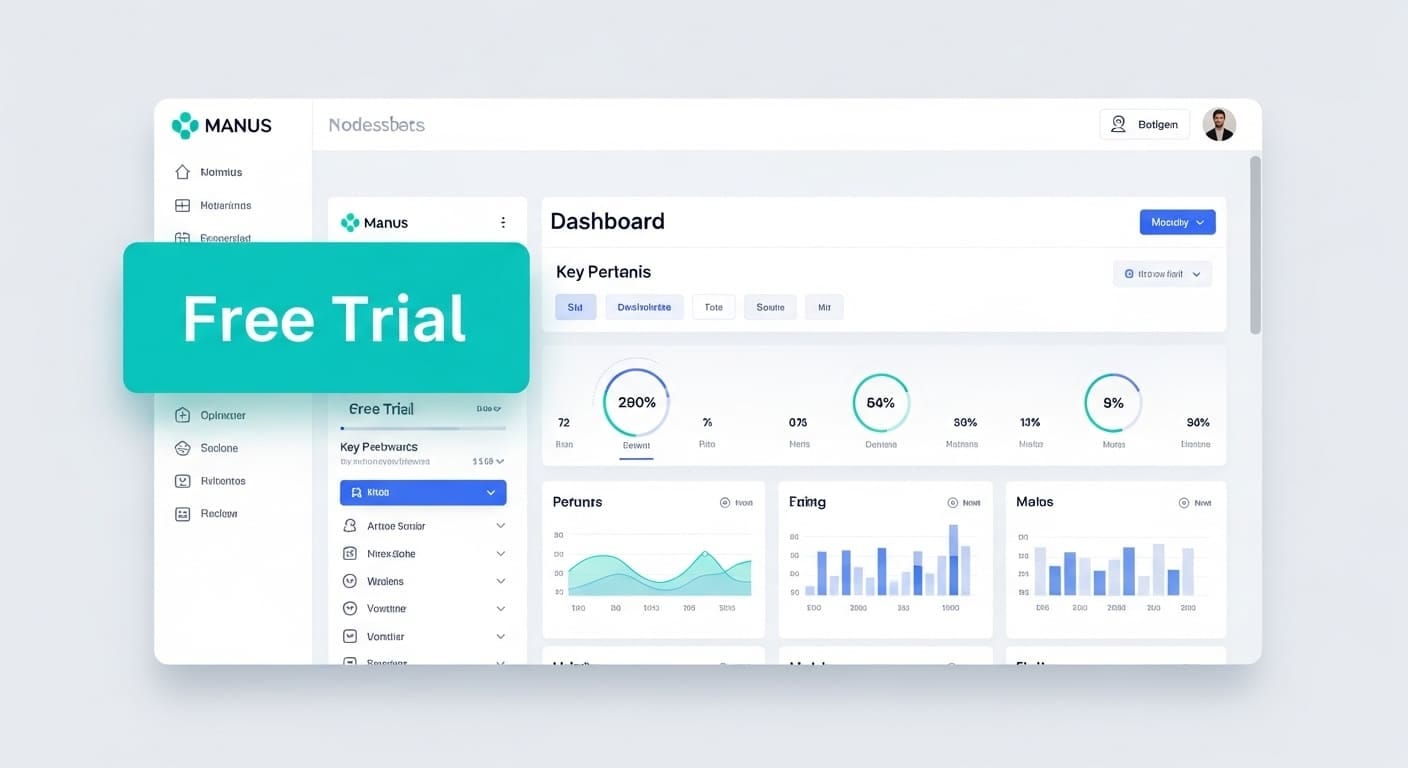
After six months of daily use, I can honestly say Manus has transformed how I work. It’s not perfect — no tool is — but it’s the closest thing I’ve found to having a brilliant assistant who never sleeps.
If you’re curious about testing it yourself, I’ve got good news. Manus offers a 14-day free trial, which is exactly how I started. No credit card required, no pressure — just enough time to see if it clicks with your workflow. Try Manus free for 14 days here
Full transparency: That’s my affiliate link, which means I get a small commission if you decide to subscribe after the trial. It doesn’t cost you anything extra, and it helps me keep testing and reviewing AI tools like this one.
I only recommend tools I actually use and believe in — Manus earned its place in my daily workflow. Start with something simple, like email management or basic task automation. You’ll know within a few days whether it’s going to work for you.